Introduction
The island of Naxos, a jewel in the Aegean Sea, harbors a collection of ancient Greek enigmas: the unfinished colossal statues known as the Kouroi. These include the Kouros of Apollonas, often referred to as the Colossus of Dionysus, the mysterious Kouroi of Flerio, and the enigmatic Kouros of Potamia. Each of these statues, carved directly from the island’s rich stone, stands as a testament to the artistic ambition and technical skill of ancient Greek sculptors. Dating back to the 6th century BC, these figures embody the kouros archetype—youthful, standing male figures that were a staple of Greek sculpture.
Get your dose of History via Email
The Kouroi Statues
Scattered across Naxos, from the verdant valley of Flerio to the tranquil village of Potamia, and the coastal settlement of Apollonas, these statues remain in the very locations and Ancient Quarries from which they were hewn, offering a window into the past and inviting us to ponder the reasons behind their incompletion.
Historical Background of Kouros of Apollonas
The Kouros of Apollonas was discovered in the early 20th century. It was found in the same quarry where Naxian sculptors had begun its creation. The statue’s discovery shed light on the ancient techniques of quarrying and sculpture. The kouros is attributed to the archaic period of Greek art, a time when sculptors began to explore more naturalistic forms.
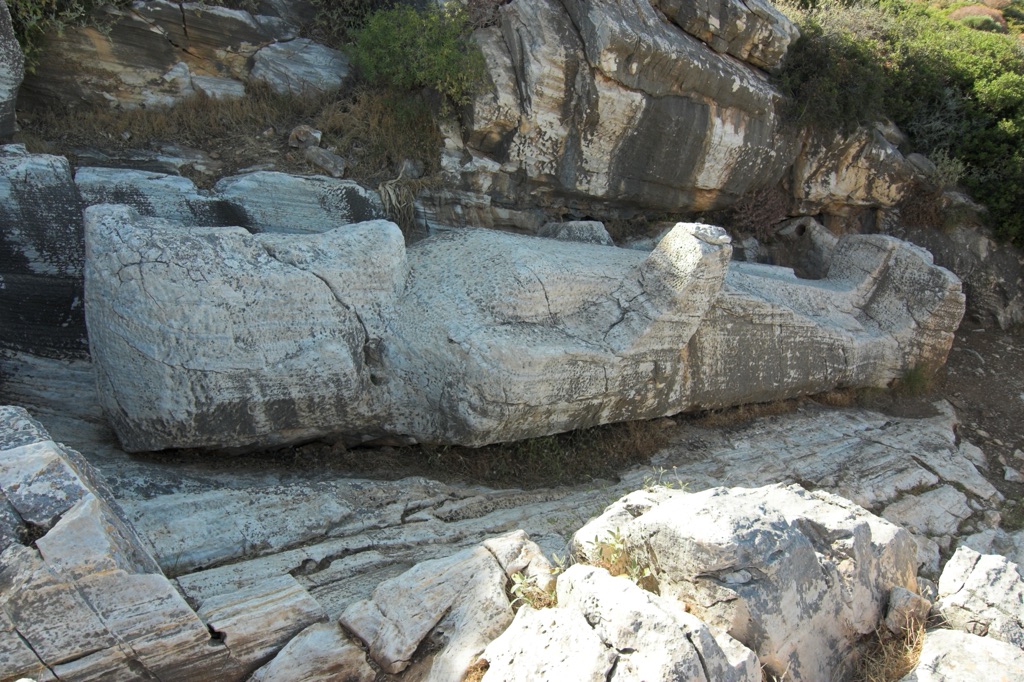
Historians believe that the statue was the work of local Naxian artists. These artists were renowned for their skill in marble sculpture. The island of Naxos was a center for high-quality marble, which was in demand throughout the Greek world. The kouros itself is an embodiment of the island’s rich artistic heritage.
While the statue was never completed or moved from its original location, it has become an integral part of the island’s history. The reasons for its abandonment remain a mystery. Some speculate that flaws in the marble may have led the sculptors to leave it unfinished.
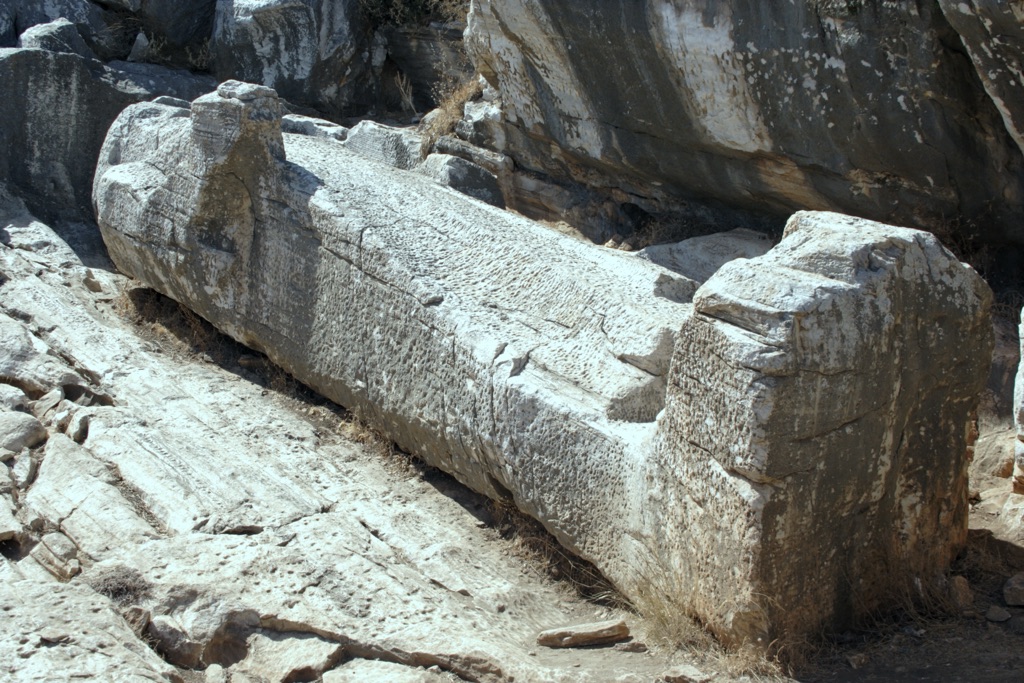
About Kouros of Apollonas
The Kouros of Apollonas is an impressive monolith, measuring approximately 10.7 meters in length. It represents a nude male figure, typical of the kouros type statues that were prevalent in the Archaic period of Greek art. The figure is lying on its back, with details of the anatomy partially carved out.
The statue’s creation involved a meticulous process of extracting and shaping the marble. Sculptors used iron chisels and wooden mallets to carve the figure directly from the stone bed. The kouros was intended to be freed from the rock and stood upright, but the process was never completed.
One of the most striking features of the Kouros of Apollonas is its sheer size. It is one of the largest kouroi ever discovered. The statue’s unfinished state provides a rare insight into the sculptural techniques of the time. It shows the progression from rough-hewn rock to a more refined figure.
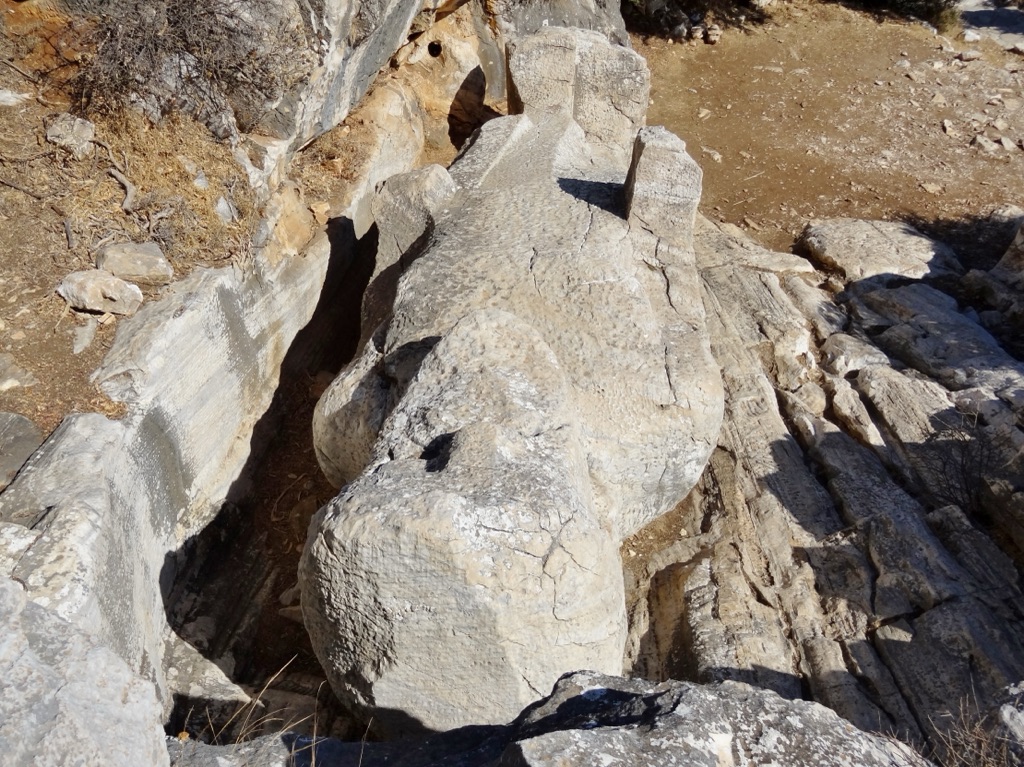
The choice of marble as the building material is significant. Naxian marble was highly prized for its translucency and fine grain. It was a favored medium for sculptors throughout the Greek world. The Kouros of Apollonas exemplifies the quality of this material and the ambition of ancient Greek sculptors.
Although the statue lacks the polished finish of completed works, its form and proportions follow the stylistic conventions of the era. The kouros has the archaic smile, a feature common in sculptures from this period, which adds to its enigmatic presence.
Theories and Interpretations
Several theories have been proposed regarding the purpose and symbolism of the Kouros of Apollonas. Some scholars suggest that it was intended to represent a god, possibly Dionysus or Apollo, given the statue’s location and size. Others believe it may have been a funerary monument, a common practice for kouroi.
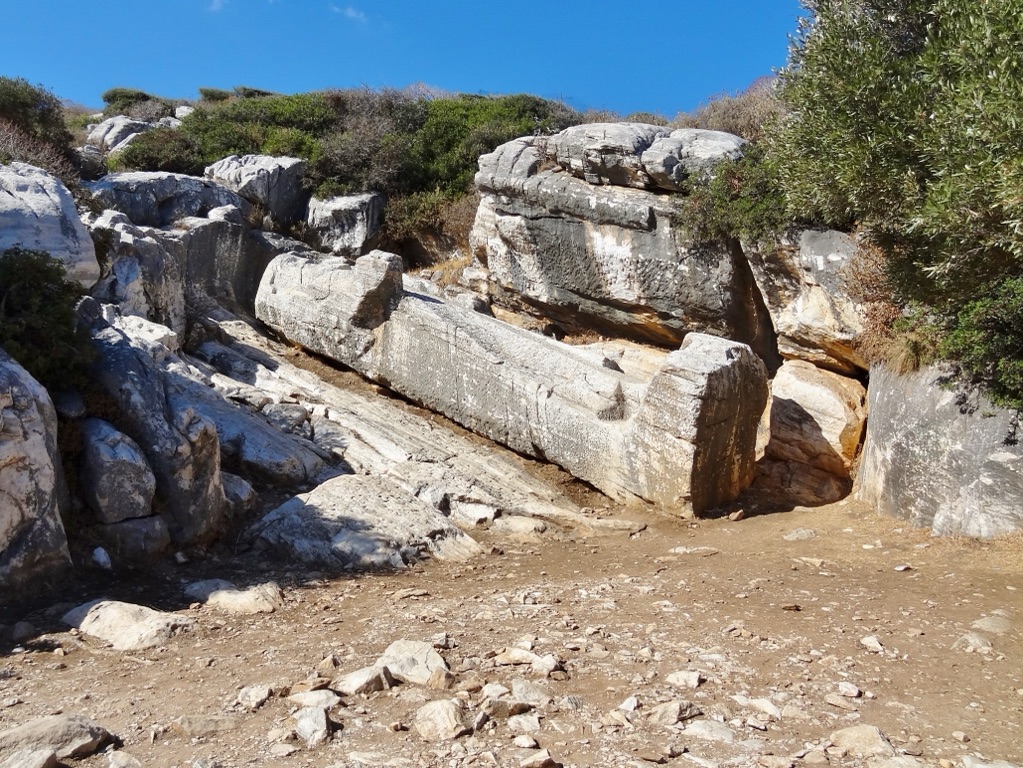
The mystery of why the statue was left unfinished has led to various interpretations. Some experts theorize that a flaw in the marble may have been discovered, rendering the statue unusable for its intended purpose. Alternatively, changes in artistic styles or political upheavals could have halted its production.
Matching the kouros to historical records has been challenging due to the lack of inscriptions or definitive evidence linking it to a specific individual or event. However, its style and technique provide clues to its origins and the cultural context in which it was created.
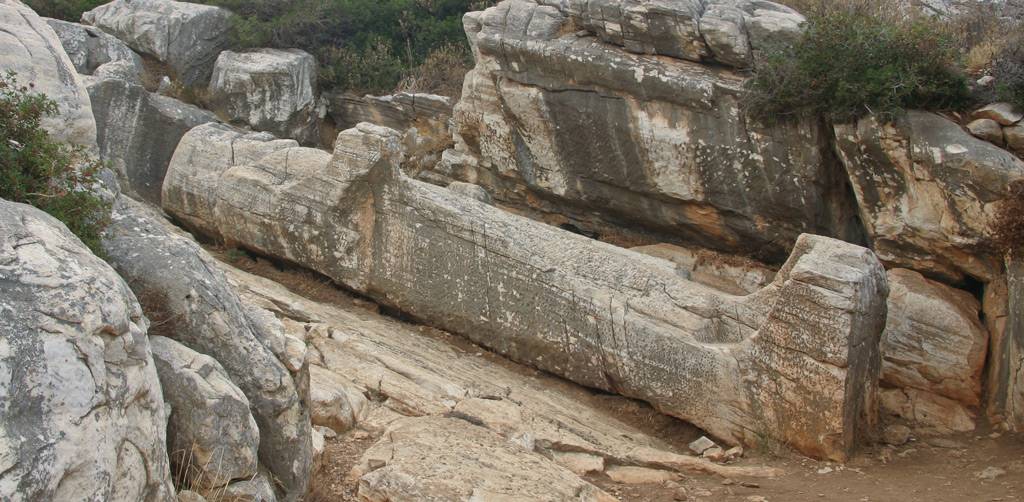
Dating the Kouros of Apollonas has relied on stylistic analysis and comparison with other known works from the Archaic period. The methods used to determine its age include examining the carving techniques and the evolution of artistic styles during the era.
Despite the uncertainties surrounding the Kouros of Apollonas, it remains a significant artifact for understanding ancient Greek art and society. Its unfinished state offers a unique window into the sculptural process, while its form and scale reflect the grandeur of Archaic Greek sculpture.
The Kouroi of Flerio
Also on the Greek Island of Naxos are the Kouroi of Flerio. They are a pair of ancient Greek marble statues, known as Kouroi. The Kouroi of Flerio were unearthed in the Naxian village of Melanes.
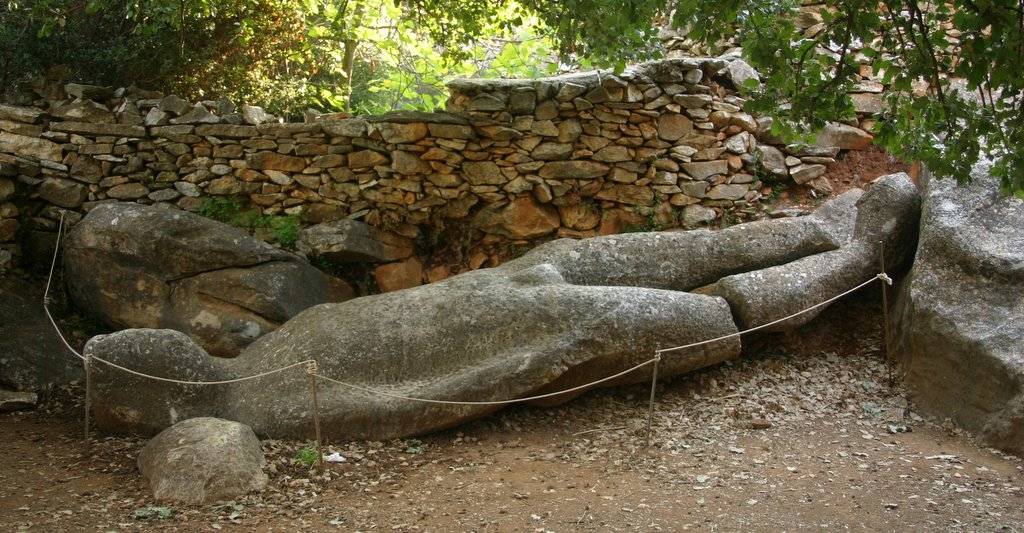
The two large marble statues each stand at over five meters tall and they represent young men, or kouroi, a common subject in Archaic Greek sculpture. The statues are characterized by their frontal stance, one foot slightly forward, and arms at their sides with fists clenched. This pose was typical of the period and symbolized the idealized form of youth and strength in ancient Greek culture.
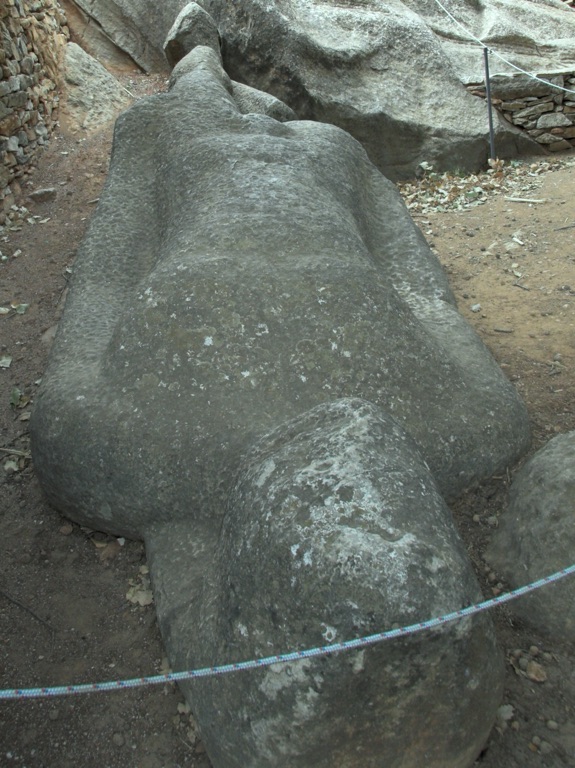
The Kouros of Potamia
The Kouros of Potamia was found in the Naxos Ancient Quarry. It’s located around halfway up the 300 metre high site. The statue is approximately 5.0 metres long.
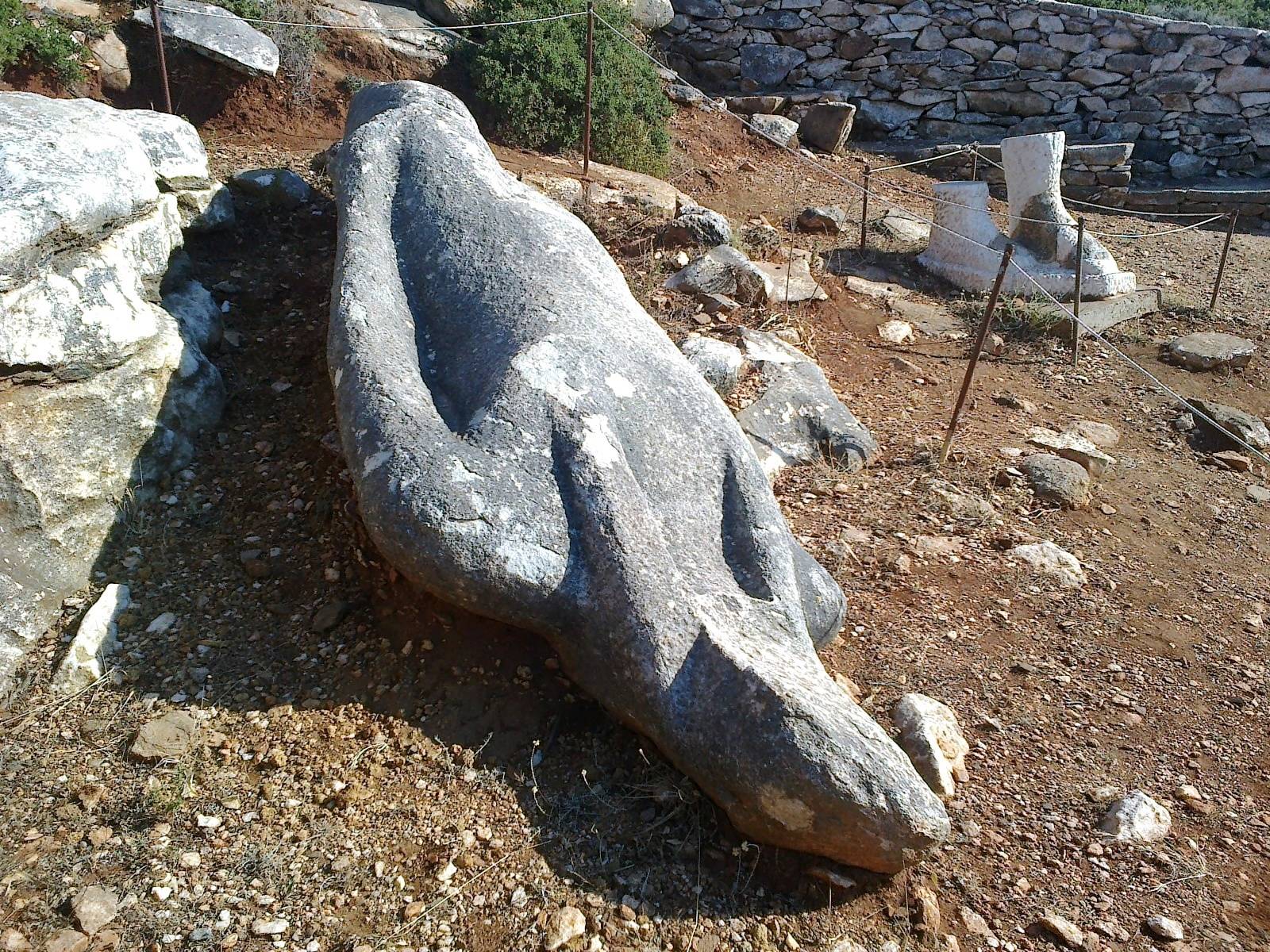
It is also unfinished, but strangely it is missing a face and shows signs of scratches on the foot stumps. The legs are also broken, which some believe may have happened in transport. It’s clear that this statue never made it out of the quarry and was abandoned.
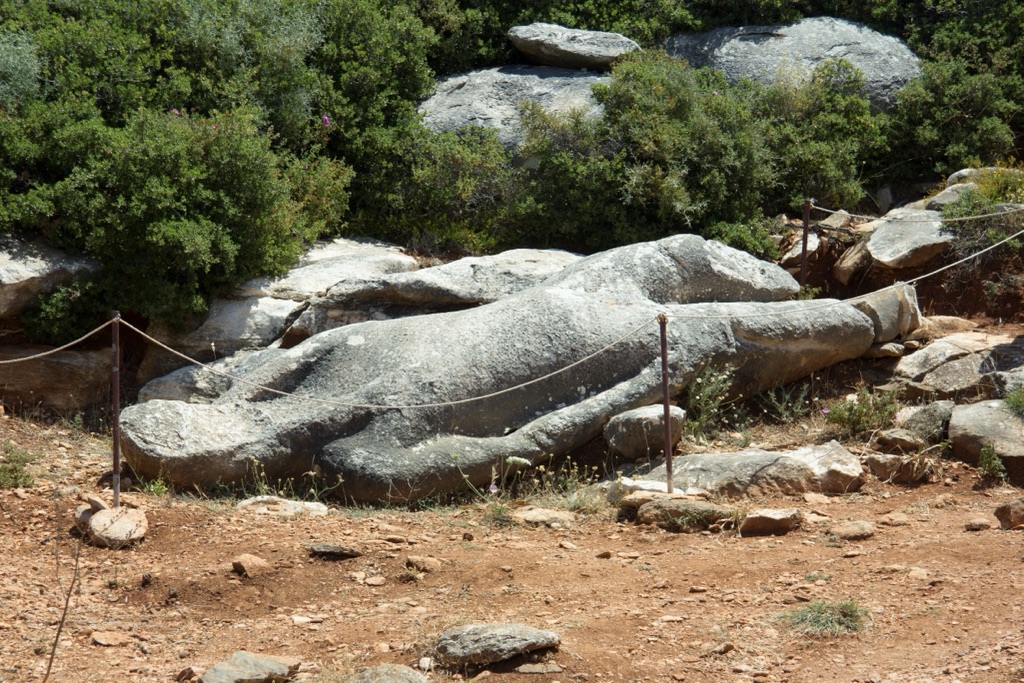
At a glance
- Country: Greece
- Civilization: Ancient Greek
- Age: 6th century BC
Conclusion and Sources
- Wikipedia – Kouros of Apollonas
- Britannica – Kouros
